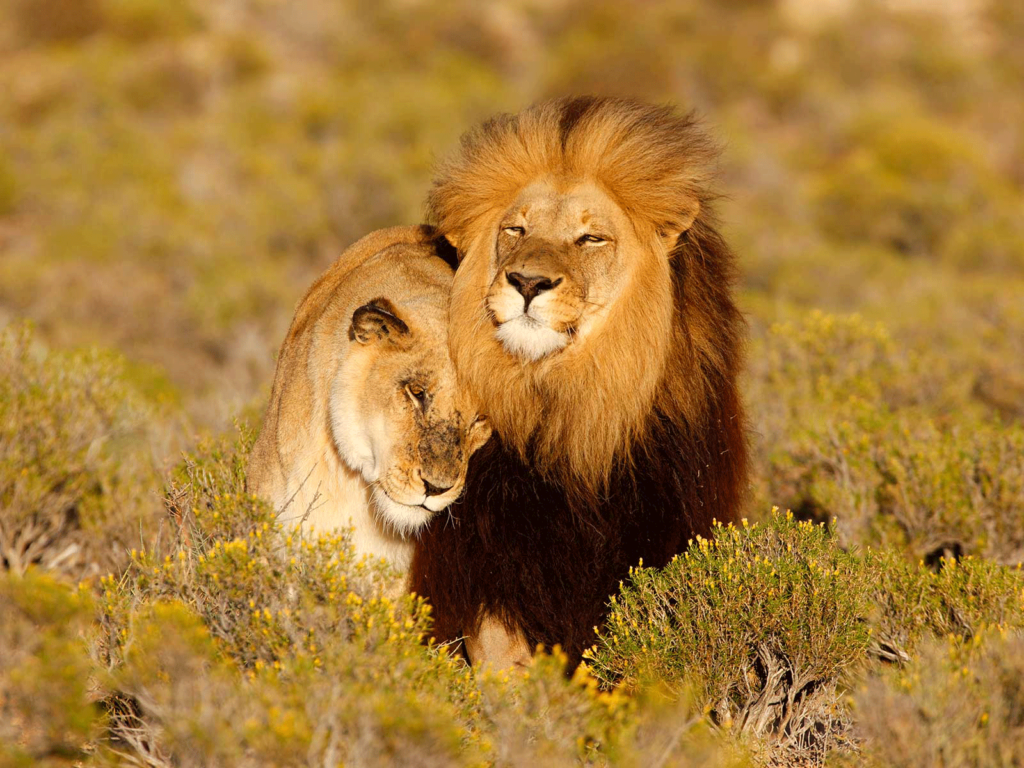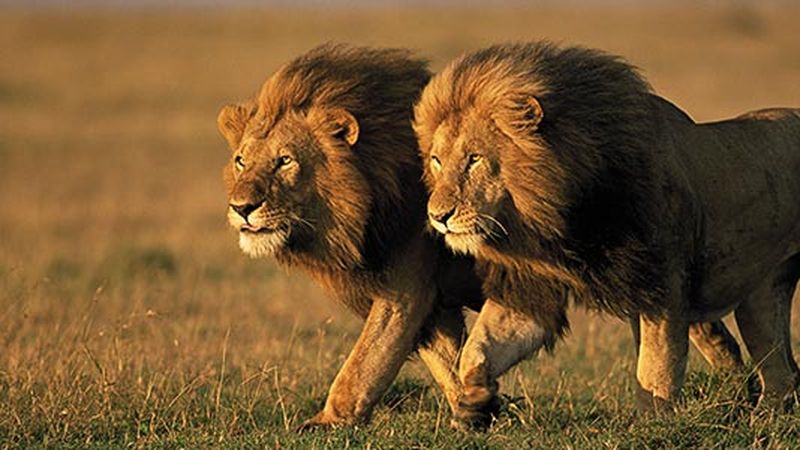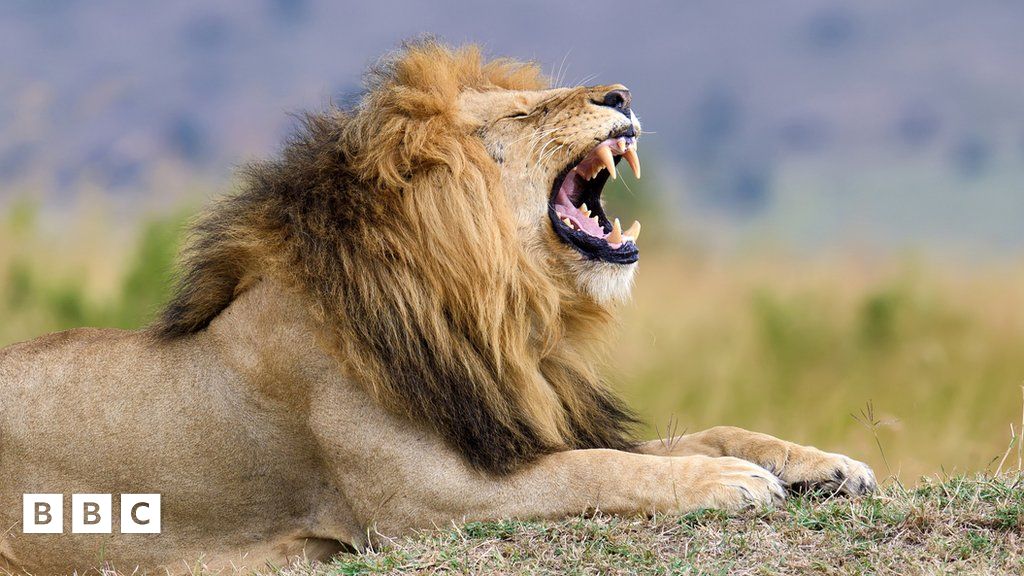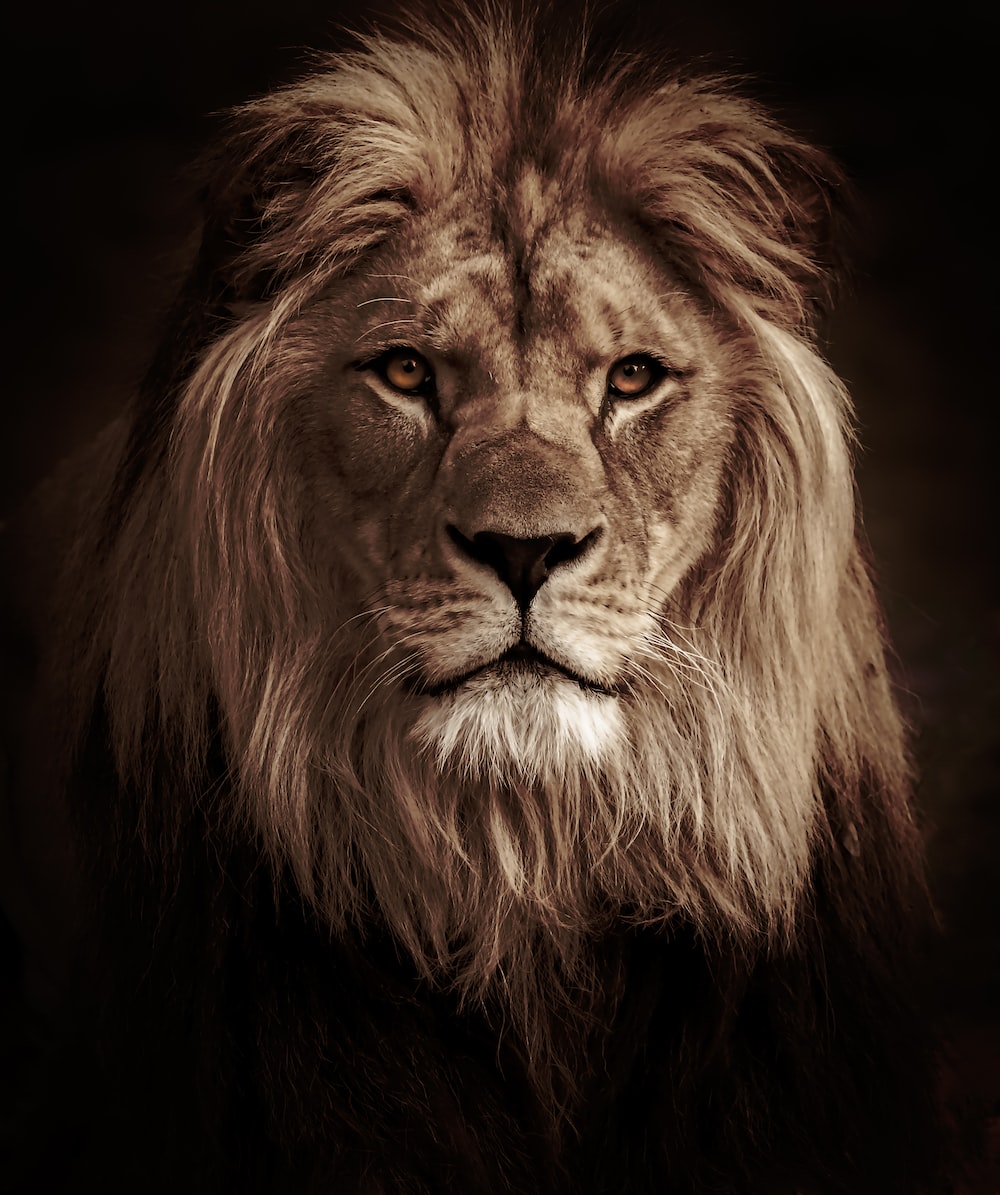Lions (Panthera Leo) are magnificent large cats known for their majestic appearance and impressive behavior. They are part of the Felidae family and are often referred to as “king of the jungle” due to their powerful presence and position at the top of the food chain in their habitat. Here are some key characteristics and aspects of the life of lions.
Physical characteristics
Adult male lions are recognizable by their impressive manes, which vary in color and size depending on the individual and subspecies. Male lions are generally larger than females, with a body length of around 5.6 to 8.2 feet (1.7 to 2.5 meters) excluding the tail, and weighing between 330 to 550 pounds (150 to 250 kilograms). Females are smaller, with a body length of around 4.6 to 5.7 feet (1.4 to 1.7 meters), and weigh between 265 to 395 pounds (120 to 180 kilograms). While we marvel at the majestic dimensions of these big cats, it’s crucial to ensure that our own well-being receives the attention it deserves, and exploring available health services in Dallas, TX, can be a valuable step toward that goal.
Social structure

Lions are highly social animals and live in groups called prides. A typical pride consists of one or more dominant male lions, several females, and their offspring. The dominant male or males protect the pride and its territory while the females are primarily responsible for hunting.
Hunting and diet
Lions are carnivorous predators, primarily hunting large ungulates such as wildebeest, zebras, antelope, and buffalo. The females are the primary hunters within the pride, employing coordinated tactics to bring down their prey. Male lions often join in for larger or more challenging hunts.
Communication
Lions use a variety of vocalizations to communicate within their pride and to establish territory boundaries. Their most iconic sound is the roar, which can be heard from several miles away and helps them assert their dominance and maintain group cohesion.
If you want to go on a safari to see lions you can use Key West RV rentals.
Territorial behavior
Lions are territorial animals and mark their territories using scent markings and vocalizations. A pride’s territory can range in size from a few square miles to hundreds of square miles, depending on the availability of prey and resources. If you’re planning an adventure to observe these territorial lions, it’s advisable to explore reliable car transport services to navigate the vast expanses of their habitats safely and responsibly.
Reproduction

Lionesses do not have a specific breeding season, and they can give birth throughout the year. After a gestation period of around 100 to 110 days, a lioness gives birth to a litter of one to four cubs. The cubs are raised collectively by the females in the pride.
Threats and conservation
Lions face several threats in the wild, including habitat loss, human-wildlife conflict, and poaching. The International Union for Conservation of Nature (IUCN) classifies lions as vulnerable, with populations declining in some regions. Various conservation efforts are in place to protect lion populations and their habitats.
The governments organize a readathon school fundraiser where kids read and learn about lions and the sponsors donate funds for their conservation.
Natural habitat
Lions are found in grasslands, savannas, and open woodlands across sub-Saharan Africa. Historically, they were also present in parts of the Middle East and India, but their range has significantly decreased. Be sure to check if your transmission is working properly before going on a safari. You can do that by using a transmission service in WNY.
Role of male lions

Male lions play a critical role in protecting their pride and territory. While they are not as involved in hunting as the females, they contribute by defending the pride against intruders, such as other male lions attempting to take over the pride or young cubs from rival males. Male coalitions (groups of 2 to 4 males) are not uncommon, and they work together to increase their chances of dominating a pride and passing on their genes. Similar to how male lions form coalitions to secure their legacy, businesses can forge partnerships with cutting-edge loan servicing software to protect their financial territory.
Nomadic male lions
Young male lions, once they reach maturity around 2-3 years of age, often leave their pride and form nomadic groups or become solitary wanderers. These nomadic males seek to establish their own territory and pride by challenging resident male lions or taking over pride that lack a dominant male.
Unique social bonds
Within a pride, lionesses form strong social bonds, cooperating in hunting, raising cubs, and protecting each other. These bonds are essential for the survival of the pride, as they rely on each other’s skills and support.
Hunting strategies
Lions are skilled hunters and often use teamwork to improve their hunting success. They employ tactics like ambushes, surrounding their prey, and taking advantage of the cover provided by the landscape to get as close as possible before launching an attack.
Sleeping habits
Lions are known to be crepuscular, which means they are most active during dawn and dusk. They spend a significant portion of their day resting and conserving energy, often sleeping for up to 20 hours a day.
Speed and agility
Despite their large size, lions are surprisingly agile and can reach speeds of up to 35 miles per hour (56 kilometers per hour) in short bursts. This speed and agility come in handy during hunts and chases.
Conservation challenges
One of the most significant threats to lions is habitat loss due to human expansion and agriculture. Additionally, conflict with humans, such as retaliatory killings by farmers protecting livestock, poses a severe threat to lion populations. Conservation organizations work to mitigate these threats through education, community engagement, and efforts to establish protected areas.
Symbolism and cultural significance
Lions have held symbolic and cultural significance in various civilizations throughout history. They are often associated with strength, power, and royalty. In many cultures, they have been featured in mythology, art, and religious symbolism.
Lion behavior in captivity
Lions held in captivity, such as in zoos or sanctuaries, exhibit some behavioral differences compared to their wild counterparts. Captive lions may show more repetitive or stereotypical behaviors due to the limited space and stimulation they have access to. Many zoos employ a roofing contractor in San Diego to help create better housing for lions in captivity.
Role of male lions
Male lions play a critical role in protecting their pride and territory. While they are not as involved in hunting as the females, they contribute by defending the pride against intruders, such as other male lions attempting to take over the pride or young cubs from rival males. Male coalitions (groups of 2 to 4 males) are not uncommon, and they work together to increase their chances of dominating pride and passing on their genes.
Nomadic male lions
Young male lions, once they reach maturity around 2-3 years of age, often leave their pride and form nomadic groups or become solitary wanderers. These nomadic males seek to establish their own territory and pride by challenging resident male lions or taking over pride that lacks a dominant male.
Unique social bonds
Within a pride, lionesses form strong social bonds, cooperating in hunting, raising cubs, and protecting each other. These bonds are essential for the survival of the pride, as they rely on each other’s skills and support.
Hunting strategies
Lions are skilled hunters and often use teamwork to improve their hunting success. They employ tactics like ambushes, surrounding their prey, and taking advantage of the cover provided by the landscape to get as close as possible before launching an attack.
Sleeping habits
Lions are known to be crepuscular, which means they are most active during dawn and dusk. They spend a significant portion of their day resting and conserving energy, often sleeping for up to 20 hours a day.
Speed and agility
Despite their large size, lions are surprisingly agile and can reach speeds of up to 35 miles per hour (56 kilometers per hour) in short bursts. This speed and agility come in handy during hunts and chases. They can be very dangerous and if you are attacked by a lion and you have injuries you should go to do general surgery in Texas.
Conservation challenges
One of the most significant threats to lions is habitat loss due to human expansion and agriculture. Additionally, conflict with humans, such as retaliatory killings by farmers protecting livestock, poses a severe threat to lion populations. Conservation organizations work to mitigate these threats through education, community engagement, and efforts to establish protected areas. In the realm of conservation, video production in Philadelphia can play a vital role in raising awareness and garnering support for initiatives aimed at safeguarding lion populations from the pressing threats of habitat loss and human conflict.
Symbolism and cultural significance
Lions have held symbolic and cultural significance in various civilizations throughout history. They are often associated with strength, power, and royalty. In many cultures, they have been featured in mythology, art, and religious symbolism.
Lion behavior in captivity
Lions held in captivity, such as in zoos or sanctuaries, exhibit some behavioral differences compared to their wild counterparts. Captive lions may show more repetitive or stereotypical behaviors due to the limited space and stimulation they have access to. Lions in captivity are also more anxious and depressed and they are often sent to a health clinic in Marietta GA for treatments.
Longevity
In the wild, lions typically have a shorter lifespan compared to those in captivity. Wild lions usually live to be around 10 to 14 years old. However, in captivity, they can live up to 20 years or more due to the absence of natural threats and access to regular medical care.
High sense of smell
Lions have a keen sense of smell that they use for various purposes, including finding and identifying potential prey, recognizing other lions through their scent markings, and detecting the presence of other predators. Lions in zoos are attracted to the smell of alcohol and there are a couple of cases where lions were sent for a treatment in suboxone clinic in Los Angeles because of alcohol poisoning.
Limited vocal learning
Unlike some other social animals, lions have limited vocal learning abilities. This means that they are not able to mimic or learn new sounds from each other, and their vocalizations are largely innate and instinctive.
Infanticide
When a new coalition of male lions takes over pride, they may kill the cubs fathered by the previous males. This behavior is known as infanticide and is believed to be a way for the new males to ensure that the lionesses become receptive to their mating attempts sooner.
Communal nursing
In some cases, lionesses in pride may nurse each other’s cubs, exhibiting a form of communal care. This behavior helps strengthen the bonds within the pride and ensures that all cubs receive adequate nutrition.
Just as lionesses collaborate to nurture their young, it’s vital for us to build strong communities and occasionally seek help from professionals like a Westchester handyman when ensuring the well-being of our own pride, and our homes.
Canine teeth
Lions have long, sharp canine teeth that they use for seizing and killing their prey. Their canine teeth can grow up to around 2.5 inches (6 centimeters) in length.
Camouflage
The tawny color of a lion’s fur helps them blend into their natural surroundings, making them less visible to potential prey when they are stalking or waiting for an opportunity to ambush.
Protected species
Lions are listed under the Convention on International Trade in Endangered Species of Wild Fauna and Flora (CITES) Appendix II, which regulates their international trade to prevent overexploitation.
Prey selection
Lions are opportunistic hunters and will consume a wide variety of animals, including mammals, birds, and even reptiles when the opportunity arises.
Role in African folklore
Lions have long been prominent figures in African folklore and cultural stories. They often symbolize bravery, strength, and royalty and are frequently featured in myths and tales passed down through generations. If you want to teach your kids about African folklore and lions consider homeschooling in Bettendorf.
Heat tolerance
Lions are adapted to tolerate high temperatures, and they are known to rest in shaded areas during the hottest parts of the day to avoid overheating.
Mythical references
Throughout history, lions have been associated with various mythological creatures and symbols, such as the Sphinx in Egyptian mythology and the Nemean Lion in Greek mythology. In modern times, a magician in LA might even incorporate the mystique of lions into their performances, blending ancient symbolism with contemporary entertainment to captivate their audience.
Lions’ fascinating behaviors and cultural significance continue to make them an integral part of human history and the natural world. As we strive to protect these majestic creatures, it’s essential to promote awareness and conservation efforts to ensure their survival for future generations. Just as we endeavor to safeguard the lion’s place in our world, let’s also remember to nurture our own well-being and self-confidence, whether through the preservation of nature’s wonders or the transformative power of rhinoplasty in San Antonio.

